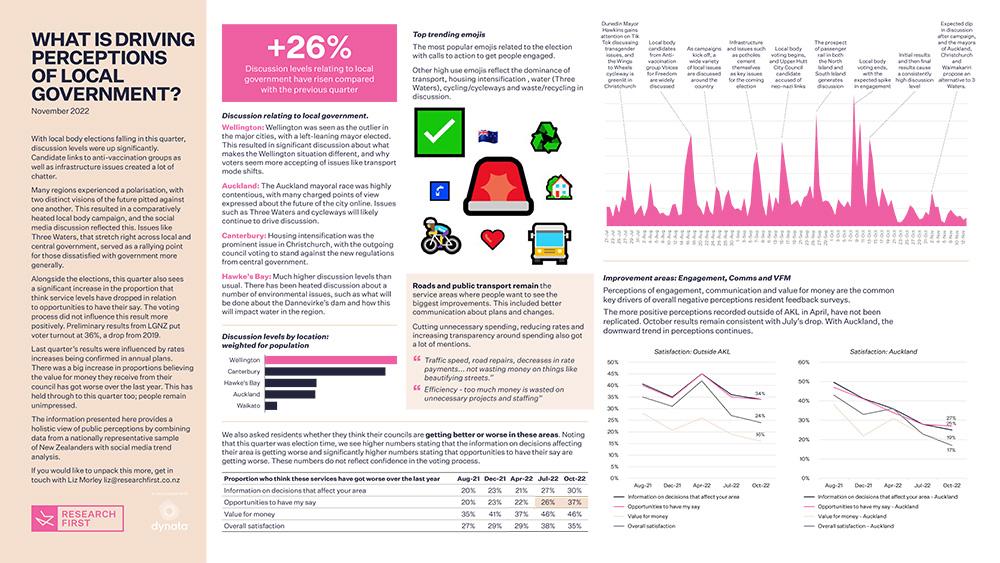What is driving perceptions of local government?
With local body elections falling in this quarter, discussion levels were up significantly. Candidate links to anti-vaccination groups as well as infrastructure issues created a lot of chatter.
Many regions experienced a polarisation, with two distinct visions of the future pitted against one another. This resulted in a comparatively heated local body campaign, and the social media discussion reflected this. Issues like Three Waters, that stretch right across local and central government, served as a rallying point for those dissatisfied with government more generally.
Alongside the elections, this quarter also sees a significant increase in the proportion that think service levels have dropped in relation to opportunities to have their say. The voting process did not influence this result more positively. Preliminary results from LGNZ put voter turnout at 36%, a drop from 2019.
Last quarter’s results were influenced by rates increases being confirmed in annual plans. There was a big increase in proportions believing the value for money they receive from their council has got worse over the last year. This has held through to this quarter too; people remain unimpressed.
The information presented here provides a holistic view of public perceptions by combining data from a nationally representative sample of New Zealanders with social media trend analysis.



